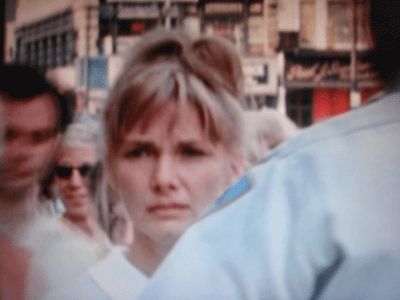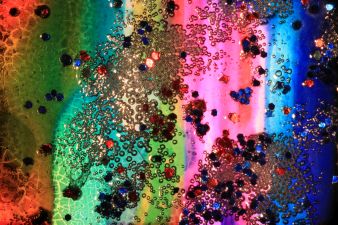SFIFF 2015: For What it's Worth
Posted May 4, 2015 at 2:03pm by Carl Martin
Only two features in this year's edition were shown in 35mm, both fairly recent UCLA restorations of 16mm-originated American outsider films little seen in their own time.
Wanda doesn't smile much |
I'd seen Wanda in 2011 at the PFA, sleepily, and was determined this time not to let my eyelids get the upper hand. It's a film that requires some effort: it's structured conventionally as a linear narrative, but what moves the narrative isn't so clear. The central character, writer/director Barbara Loden's Wanda, is adrift. At the threat of abandonment or rape, she will put up a fight, but then what? Only by accident does she team up with a robber, and only happenstance keeps her from meeting his fate. She is fleeing domesticity, but towards what? What does the world have to offer a hardscrabble woman in 1970? The bleak film was withdrawn from distribution, and 40 years later its 16mm original reversal elements were found in a closing lab. Ross Lipman's restoration is nearly all-analog, and shows off the grainy grit of its source.
An even more marginal production than Wanda, Stanton Kaye's Brandy in the Wilderness appears to have been shot on a frayed shoestring (its monochrome photography gracefully enduring a 35mm blowup from A and B rolls and other print sources, all 16mm), an amazing battery of techniques subsequently deployed to pull its elements together into a more-or-less coherent whole. Only a handful of shots have sync-sound, voice-over tying together the remainder. This digressive, diaristic voice-over does double duty, becoming the vehicle for a shift in perspective that is a key organizing principle of the work. Much of the footage seems semi-documentary, some is culled from the Cinerama epic How the West Was Won and a student film, some is still imagery. Freeze-frames, playfully voice-swapped post-synchronization, and hand-painted sections (even in this restoration they are directly painted onto the print) liven up the work. In a low-budget film, it is particularly rewarding to see creative use made of what extravagances are indulged. Brandy incorporates some optical work, particularly effective being dissolves between zooms onto still images (of Elvis in one sequence) that seem to fly out at the viewer. Unfortunately i couldn't devote my full attention to the film as I was the projectionist for the show. I hope Brandy will make a reappearance in the Bay Area so I can give her a closer inspection.
Jenn Reeves dives into the emulsion |
The experimental shorts program Nothing But a Dream, after some soporific videos (I did admire the camera movements in Vanessa Renwick's layover, though her video had very poor color depth), concluded with three worthwhile 16mm films. Ryan Marino's observational Old Growth plays with late afternoon light dappled onto the leaves and tendrils of a "primeval rain forest". Jenn Reeves's Color Neutral relies primarily on direct manipulation of 16mm film, bejewelling rainbow bursts of color (step-printed, perhaps 4 iterations of each frame, to allow each abstract image to linger briefly on the eye). Towards the end, both image and soundtrack resolve to an underlying order. Finally, in Blue Loop, July, Mike Gibisser's camera takes up a stationary position pointed at the night sky, faint glows visible at the top and bottom of the frame. Long exposures arrest the beautiful traces of fireworks, almost suggesting the result of hand-scratching.
Though some of the earlier video pieces had clearly been shot on film, none of their authors made mention of the medium in the Q&A session that followed. Only Marino, who finished on film, described loading and shooting as important to his process.
The only other analog presentation in the festival, Marcel Duchamp's Anemic Cinema, plays in 35mm to accompaniment by Cibo Matto. I suspect it'll be another instance of a band failing to serve the film, but if I'm wrong, and I hope I am, work will keep me from seeing it.


